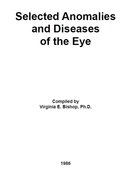- Home
-
Learn
- History of VI >
- Legislation & Laws >
- Vision Professionals >
-
VI Program Resources
>
- Program Printables
- Itinerant Teaching Tips
- Year at a Glance
- VI Program Handbook
- Caseload Analysis
- Organization & Time Management
- Professional Development
- Teacher Standards
- Professional Ethics
- Awards & Recognition
- APH Scholar Program
- Professional Organizations
- Certification Organizations
- Dealing with Challenges
- Professional Publications >
- Relatable Books for All Ages >
- Family Resources >
- Plan
- Basics
-
Teach
- Teaching Strategies >
-
Compensatory Skills Instruction
>
-
Social Skills
>
-
Self Determination
>
- Body Image & Acceptance
- Making Personal Goals
- My Vision Presentation
- My Self-Description
- Create a Personal Data Sheet
- Disclosure Decision
- Disability Statement
- Requesting Help
- Fighting Fears
- My Circle of Support
- Personal Responsibility
- Advocate for Safe Enviroments
- Having Picture Taken
- Coping with Change
- Aging Eyes
- Physical Characteristics
- Political Activism
- Laws Regarding Persons with Disabilities
-
Sensory Efficiency
>
-
Independent Living
>
- Orientation & Mobility Instruction >
- Recreation & Leisure >
-
Career & Vocation
>
-
Grow
- Complete Set Bonus >
-
Recorded Presentations
>
- Webinar: Tips for Being a "Physically Fit" TVI
- Webinar: The Art of Teaching the ECC
- Webinar: Virtual & F2F Strategies
- Webinar: Foundations of Teaching the ECC in the Age of Virtual Instruction
- Webinar: Itinerant Teaching Strategies
- Webinar: Using Themes to Teach the ECC
- Webinar: Conducting a FVLMA
- Webinar: Selecting the Right AT
- Webinar: Developing SMARTER Goals
- Webinar: Determining Service Intensity Using the VISSIT
- Webinar: Activities to Teach the ECC
- Webinar: Accessible Content for BLVI
- Webinar: Accommodations for VI
- Webinar: MIMO Strategies & Activities
- Webinar: SIDPID Strategies & Activities
- Webinar: Standard Course of Study Strategies & Activities
- Webinar: Job Tasks for Job, Career & Life
- Shop
- Jobs
Common Visual ImpairmentsBy: Carmen Willings
teachingvisuallyimpaired.com Updated October 2014 A visual impairment is the loss of vision that cannot be corrected by refraction (glasses). There are a number of eye disorders that can lead to visual impairments. Visual impairment can also be caused by trauma and brain and nerve disorders. Visual impairments affect people differently. It is important to understand each student's visual impairment in order to understand the potential impact on the student's vision and prognosis. A visual diagnosis will not affect two people in the same way. Each student is unique and will have individual characteristics based on intellectual ability, developmental rate, social competence as well as other factors including educational opportunities. Even when students have identical acuities and visual diagnosis, their use of vision can be very different. Eye specialists use a variety of diagnostic procedures and tests to assess the integrity, health and function of the eye. As part of the evaluation process, the doctor will use a combination of the child's history as well as the evaluation of the eye in determining the type and extent of visual impairments. It is common for eye reports to change from year to year in the report of the visual diagnosis. Doctors may drop diagnosis or change their impressions of the visual diagnosis. For this reason, it is best to retain copies of previous reports as it will help paint a picture of the child and understand current and previous therapies and recommendations.
Amblyopia(am-blee-OH-pee-uh) Amblyopia is sometimes called “Lazy eye.” It is a functional defect characterized by decreased vision in one or both eyes without detectable anatomic damage to the retina or visual pathways. If the eyes are not straight (strabismus), the student may suppress the vision in the turning eye to avoid seeing double. In all cases of amblyopia, the brain "shuts off" one eye to favor the eye with better vision. Amblyopia may be treated by patching the good eye, by surgery or with corrective lenses.
Aniridia(an-uh-RID-ee-uh) Aniridia is a congenital anomaly. It is characterized by the incomplete formation of the iris. Associated with glaucoma, nystagmus, sensitivity to light, and poor vision. Normal reactions (adaptations and responses) are impossible.
AnophthalmosAnophthalmos or Anophthalmia is the absence of a true eyeball. The student may have a prosthetic eye.
AphakiaThe absence of the lens of the eye usually is due to surgery for cataract. In rare cases it is a part of the abnormally small eye (microphthalmos). Convex lenses are worn to provide refractive power lost because of the absence of the lens. Plus lenses of high power make the eyes look larger when worn in spectacles.
Achromatopsia(ay-kroh-muh-TAHP-see-uh) Achromatopsia is a congenital defect. It is characterized by the rare inability to distinguish colors due to cone malformation and partial or total absence of cones). It is a hereditary condition that is non-progressive. People with achromatopsia also commonly experience some vision loss, especially in bright light, to which they are extremely sensitive. The severity of achromatopsia varies.
Albinism(AL-bin-izm) Albinism is a congenital defect. It is characterized by a lack of pigment in eyes, hair and skin. Usually associated with decreased visual acuity, nystagmus (rhythmic side-to-side eye movements) and photophobia (light sensitivity). It is non-progressive.
Ocular albinism: lack of pigment in iris and choroids; results in reddish pupils and iris (from choroidal vessels seen through overlying retina). Usually accompanied by poor vision, light sensitivity (photophobia), and involuntary oscillating eye movements (nystagmus). Complete-Glare is more troublesome than illumination. Tinted lenses may be prescribed.
Astigmatism(uh-STIG-muh-tiz-um) Astigmatism is a refractive error characterized by the inability of an eye to focus sharply (at any distance), usually resulting from a spoon-like (toric) shape of the normally spherical corneal surface. Instead of being uniformly refracted by all corneal meridians, light rays entering the eye are bent unequally, which prevents formation of a sharp focus on the retina. Slight uncorrected astigmatism may not cause symptoms, but a large amount may result in significant blurring. Corrected by a cylindrical (toric) eyeglass or contact lens, or refractive surgery.
Cataract(KAT-uh-rakt) Cataracts are a pathologic condition. It is characterized by opacity or cloudiness of the crystalline lens, which may prevent a clear image from forming on the retina. Surgical removal of the lens may be necessary if visual loss becomes significant. A cataract may be congenital or caused by trauma, disease, or age.
Coloboma(kah-luh-BOH-muh) Colobomas are a congenital anomaly. It is characterized by a cleft or defect in normal continuity of a part of the eye, e.g., absence of lower segment of optic nerve head, choroids, ciliary body, iris, lens or eyelid. It is caused by improper fusion of fetal fissure during gestation. It may be associated with other abnormalities, including a small eye (microphthalmia).
Color BlindnessIf the student is color blind, they may encounter difficulty with tasks involving color discrimination
Glaucoma(glaw-KOH-muh) Glaucoma is a pathologic condition characterized by increased intraocular pressure resulting in damage to the optic nerve and retinal nerve fibers. Characterized by typical visual field defects and increased size of optic cup. A common cause of preventable vision loss. May be treated by prescription drugs or surgery.
HemianopsiaHemianopsia (half vision) is a result of a malfunction along the optic pathway sometimes as a result of pressure from a tumor. The result will be related to the amount of pressure and location. Field loss can be the same in both eyes or opposite, involving half fields or quadrants or affect the uppor or lower fields.
Hyperopia (Farsightedness)(hi-pur-OH-pee-uh) Hyperopia is a refractive error sometimes called farsightedness. It is a focusing defect created by an underpowered eye, one that is too short for its optical power. Light rays from a distant object enter the eye and strike the retina before they are fully focused (true focus would be“behind the retina”). Farsighted people can see clearly in the distance but only if they use more focusing effort (accommodation) than those who have normally powered eyes; close-up vision may be blurred because it requires even more focusing effort. Corrected with additional optical power, supplied by a plus lens (spectacle or contact) or refractive surgery.
Lebers Congenital Amaurosis(am-uh-ROH-sis) Lebers is a congenital defect. It typically involves blindness or near-blindness in both eyes. There is typically marked reduction in retinal function seen on an electroretinogram.
Macular DegenerationMacular Degeneration is a pathologic condition. It is characterized by deterioration of the macula, resulting in loss of sharp central vision. Loss of central vision affects acuity, color vision, and may also cause light sensitivity.. There are two types: juvenile or senile. The most common form of inherited macular degeneration in Stargardt's Disease.
Myopia (Nearsightedness)(mi-OH-pee-uh) Myopia is a refractive error sometimes called nearsightedness. It is a focusing defect created by an overpowered eye, one that has too much optical power for its length. Light rays coming from a distant object are brought to a focus before reaching the retina. Nearsighted people see close-up objects clearly but distance vision is blurry. Corrected with a minus lens (spectacle or contact) or refractive surgery to “weaken” the eye optically and permit clear distance vision. For students with simple myopia, usually corrective lenses will correct the visual disorder mechanically. Headaches from eye strain are common for uncorrected myopia. Further, corrective lenses are able to mechanically restore distance vision such that images are not blurred. Degenerative myopia is different in that it usually can not be corrected with corrective lenses. The high refraction required will mechanically reduce the peripheral fields.
Nystagmus(ni-STAG-mus) Nystagmus is a functional defect characterized by involuntary, rhythmic side-to-side or up and down (oscillating) eye movements that are faster in one direction than the other. The inability to maintain a steady visual fixation causes low visual acuity.
Optic Nerve Atrophy (ONA)Optic Nerve Atrophy is a dysfunction of the optic nerve resulting in the inability to conduct electrical impulses to the brain causing loss of vision. The optic disc becomes pale and there is a loss of pupillary reaction.
Optic Nerve Hypoplasia (ONH)(hi-poh-PLAY-zhuh) Optic Nerve Hypoplasia is a congenital, non-progressive, abnormality characterized by small optic disc; sometimes surrounded by a double ring (scleral halo) and often a pigment epithelium halo.
PresbyopiaPresbyopia is when the lens becomes less flexible and less able than previously to accommodate for near viewing. Presbyopia occurs as a natural part of aging and typically around the age of 40 so school age students will not be affected by this, however, this could compound the student's vision when they get older.
Retinal DetachmentRetinal detachment is a pathological condition. It is characterized by separation of the retina from the underlying pigment epithelium. It is almost always caused by a leaking retinal tear, which allows fluid to pass from the vitreous into the sub-retinal space. It disrupts visual cell structure and thus markedly disturbs vision; often requires immediate surgical repair. The foremost recommendation is that a student with a detached retina or a student with conditions associated with retinal detachments such as high myopia, be restricted for physical activities. Even a mild blow to the head can result in a detachment.
Retinitis PigmentosaRetinitis Pigmentosa is a pathologic, hereditary condition that is characterized by progressive retinal degeneration in both eyes. Students experience night blindness, that may be followed by loss of peripheral vision (initially as ring-shaped defect), progressing over many years to tunnel vision and finally blindness.
Retinoblastoma(ret-in-noh-blas-TOH-muh). Retinoblastoma is a pathologic, hereiditary condition. It is characterized by a malignant intraocular tumor that develops from retinal visual cells. If untreated, seedling nodules produce secondary tumors that gradually fill the eye and extend along the optic nerve to the brain, ending in death. It is the most common childhood ocular malignancy.
Retinopathy of Prematurity(ret-in-AHP-uh-thee) Retinopathy of Prematurity is a pathologic condition. It is characterized by a series of destructive retinal changes that may develop after prolonged life-sustaining oxygen therapy is given to premature infants. Sometimes it regresses but other times a peripheral fibrous scar forms that detaches the retina, resulting in vision loss or blindness. Other possible complications include glaucoma, cataracts, myopia (nearsightedness), sunken eyes, eye misalignment.
Strabismus(struh-BIZ-mus) Functional defect. Strabismus is a defect of the eye-muscle system. Eye misalignment or eyes that do not move normally, caused by extraocular muscle imbalance. One fovea is not directed at the same object as the other. Strabismus causes either "tropias" or "phorias." Tropias deviations that can't be controlled as the one eye is turned when trying to look at an object which makes binocular vision impossible.
Other Causes of Visual ImpairmentsInfectionsAn infection is a pathologic condition. Invasion of disease-producing microorganisms, resulting in localized cell injury, toxin secretion, or antigen-antibody reaction. Several infections may affect the visual system. There are several infections that may be contracted in utero or during birth. They are often known by the acronym TORCH, for toxoplasmosis, rubella, cytomegalovirus, and herpes.
TraumaTrauma may be incurred by amniocentesis (rarely) or by forceps delivery. Globe perforation can occur from amniocentesis, leading to corneal scarring, possible cataract, retinal detachment, and retinal or vitreous hemorrhage. Maternal drug abuse is another cause of trauma.

Virginia Bishop put together this handbook on Selected Anomalies and Diseases of the Eye in 1986. I continue to use this resource as it has great information about a wide range of visual impairments including possible classroom implications and recommendations.
|
History of Visual Impairments
Professional Practice
Vision Professionals
Professionalism
Teacher Resources
Professional Publications
VI Book Resources
Family Resources
VI Referrals
Medical vision exams
visual diagnosis
fvlma
|
|
Teaching Students with Visual Impairments LLC
All Rights Reserved |
- Home
-
Learn
- History of VI >
- Legislation & Laws >
- Vision Professionals >
-
VI Program Resources
>
- Program Printables
- Itinerant Teaching Tips
- Year at a Glance
- VI Program Handbook
- Caseload Analysis
- Organization & Time Management
- Professional Development
- Teacher Standards
- Professional Ethics
- Awards & Recognition
- APH Scholar Program
- Professional Organizations
- Certification Organizations
- Dealing with Challenges
- Professional Publications >
- Relatable Books for All Ages >
- Family Resources >
- Plan
- Basics
-
Teach
- Teaching Strategies >
-
Compensatory Skills Instruction
>
-
Social Skills
>
-
Self Determination
>
- Body Image & Acceptance
- Making Personal Goals
- My Vision Presentation
- My Self-Description
- Create a Personal Data Sheet
- Disclosure Decision
- Disability Statement
- Requesting Help
- Fighting Fears
- My Circle of Support
- Personal Responsibility
- Advocate for Safe Enviroments
- Having Picture Taken
- Coping with Change
- Aging Eyes
- Physical Characteristics
- Political Activism
- Laws Regarding Persons with Disabilities
-
Sensory Efficiency
>
-
Independent Living
>
- Orientation & Mobility Instruction >
- Recreation & Leisure >
-
Career & Vocation
>
-
Grow
- Complete Set Bonus >
-
Recorded Presentations
>
- Webinar: Tips for Being a "Physically Fit" TVI
- Webinar: The Art of Teaching the ECC
- Webinar: Virtual & F2F Strategies
- Webinar: Foundations of Teaching the ECC in the Age of Virtual Instruction
- Webinar: Itinerant Teaching Strategies
- Webinar: Using Themes to Teach the ECC
- Webinar: Conducting a FVLMA
- Webinar: Selecting the Right AT
- Webinar: Developing SMARTER Goals
- Webinar: Determining Service Intensity Using the VISSIT
- Webinar: Activities to Teach the ECC
- Webinar: Accessible Content for BLVI
- Webinar: Accommodations for VI
- Webinar: MIMO Strategies & Activities
- Webinar: SIDPID Strategies & Activities
- Webinar: Standard Course of Study Strategies & Activities
- Webinar: Job Tasks for Job, Career & Life
- Shop
- Jobs

